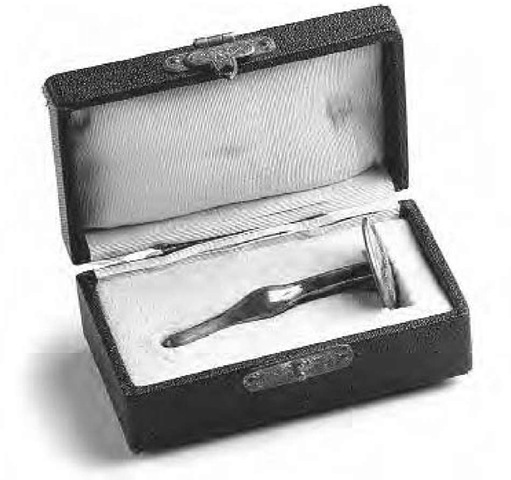Barrier contraceptives for women involve placing some kind of obstacle in the vagina to prevent the passage of sperm into the uterus. Perhaps because long before recorded history there was recognition that the seed the man planted needed to reach the uterus, barrier methods of pregnancy prevention are not only a modern but also a traditional method of contraception. Some of the historical attempts of women to establish a barrier employed materials similar in shape to those currently used.
In Sumatra, for example, women molded opium into a cuplike shape and inserted it into the uterus to cover the cervix. Chinese and Japanese women covered the cervix with oiled silky paper (misugami). Hungarian women used beeswax melted into 5- to 10-cm-wide disks (roughly l.5 to 3 inches wide). Some historical barrier devices were quite ingenious. Giovanni Casanova, whose Memoirs record his numerous sexual encounters, recommended that women squeeze half a lemon and then insert the lemon rind into their vaginas, fitting it over the cervix. In terms of what we now know about how contraceptives work, the lemon rind would act as a contraceptive cup while the citric acid remaining in the pulp would serve as a spermicide. The problem was to make sure the cup stayed in place.
Rubber, even before the techniques had been developed to vulcanize it, was widely used in the form of pessaries, devices inserted into the vagina to support a prolapsed (fallen) uterus or for alleviating symptoms of abnormal retroversion (a backward displacement of the uterus), ante- version (tipping forward of the uterus), ante-flexion (bending forward of the neck of the uterus), or other similar problems. Because a tipped uterus does not ordinarily cause problems, the variety of devices designed to deal with such conditions is understandable only when such devices are also seen as having contraceptive implications. For example, those designed to correct a displacement included a splint to press the uterus forward or backward, which could serve the same function as a modern intrauterine device, or rings designed to cover the cervix, enabling them to serve in the same ways as a modern diaphragm or cervical cap. In retrospect, it seems that many of the so-called female complaints of the past, which led physicians to describe a variety of devices, might well have been efforts to find some socially acceptable way of avoiding pregnancy. Such devices are much easier to document because they could be patented and advertised, whereas devices claiming to have contraceptive value were not patent protected until well into the twentieth century and could not be advertised as contraceptives either.
One of the earliest medical references to the contraceptive value of pessaries was by Friedrich Adolph Wilde, a German physician in the first part of the nineteenth century. Two developments in the last part of the nineteenth century—the invention of a method to make latex rubber and the discovery of effective sper-micides—made the barrier contraceptives the most effective of all contraceptives until the last half of the twentieth century.
This cervical plug from the Museum of Contraception in Toronto, Ontario, is a crude form of barrier contraceptive.
As anxiety over sexually transmitted diseases mounted in the 1980s, various barrier contraceptives specifically designed for women entered the market, which when combined with nonoxynol 9 or other spermicides also lessened the chances of acquiring a sexually transmitted disease. The Food and Drug Administration in 1992 approved the female condom, technically a sheath. It is 7.8 cm (approximately 3 inches) in diameter and 17 cm (slightly more than 6.5 inches) long and made of polyurethane (some are made of latex).The soft, loose-fitting sheath contains two flexible rings. One ring lies inside at the closed end of the sheath and is fitted over the cervix in much the same way a diaphragm is.
The external ring covers the perineum and provides protection to the labia and the base of the penis during intercourse. The sheath is prelubri-cated with a silicone-based lubricant. The lubricant does not contain spermicide and the sheath is approved only for one-time use. The polyurethane sheath is more desirable than the latex one because it is soft, has good heat transfer characteristics, and is less likely to tear or break. It is no less likely to deteriorate during storage than latex. The female condom should not be used in conjunction with the male condom. Its big advantage is that it is for sale without a prescription and when used with a spermi-cide offers great protection against sexually transmitted disease as well as acting as an effective barrier contraceptive. Some say that some women have stronger orgasms using it, perhaps because the traction of the device stimulates the clitoris.
The bikini female condom has also been marketed. It is designed to be slipped on like standard panties but inside is a rolled pouch that is then unrolled inside the vagina. Because the panties part of the condom covers the external labia, both partners are also protected against herpes, genital warts, and other sexually transmitted diseases, a protection that the standard male condom does not provide. The bikini female condom too can be and should be used with a spermicide.
There is also a sponge that acts as a barrier. One called Today was on the market in the early 1990s but then withdrawn, although a similar one has again appeared. One called Protectaid combines three spermicides along with a viri-cide (which kills viruses) and is designed to counter sexually transmitted diseases as well as act as a contraceptive. Various shields and new varieties of caps that block the cervix are also being marketed. The standard male barrier contraceptive is the condom.

